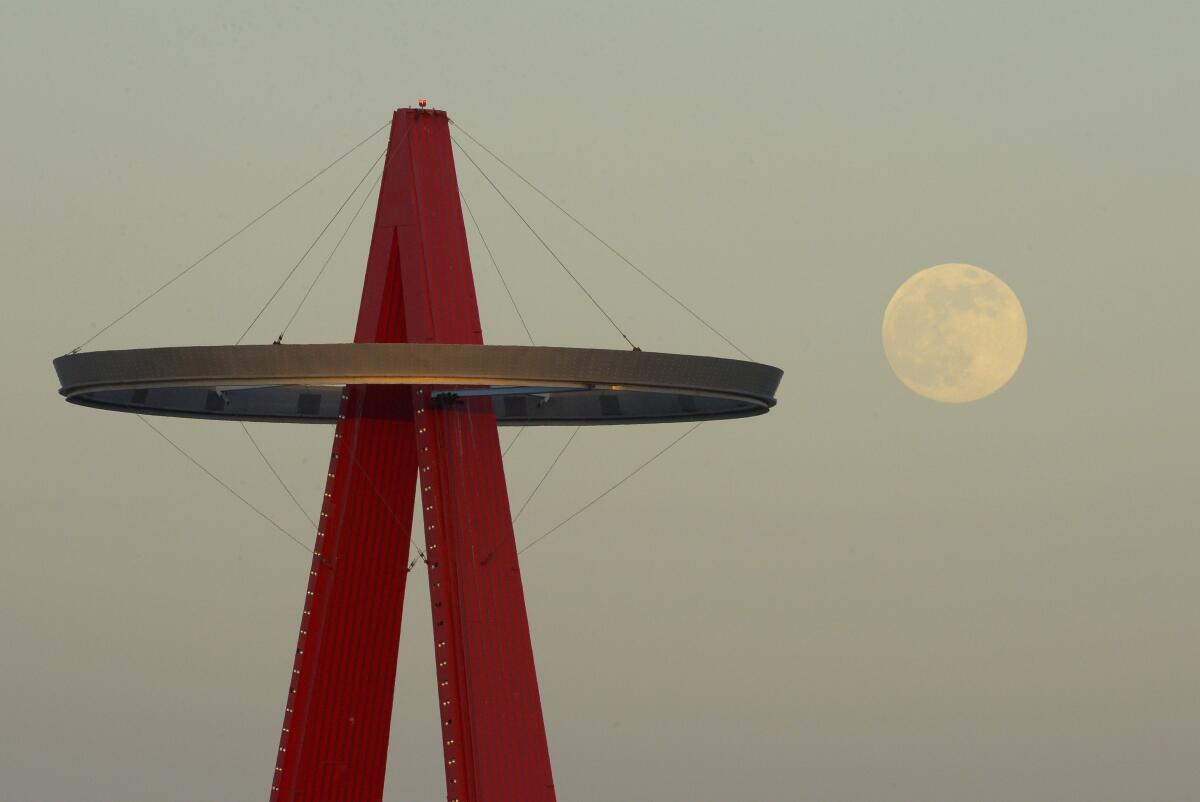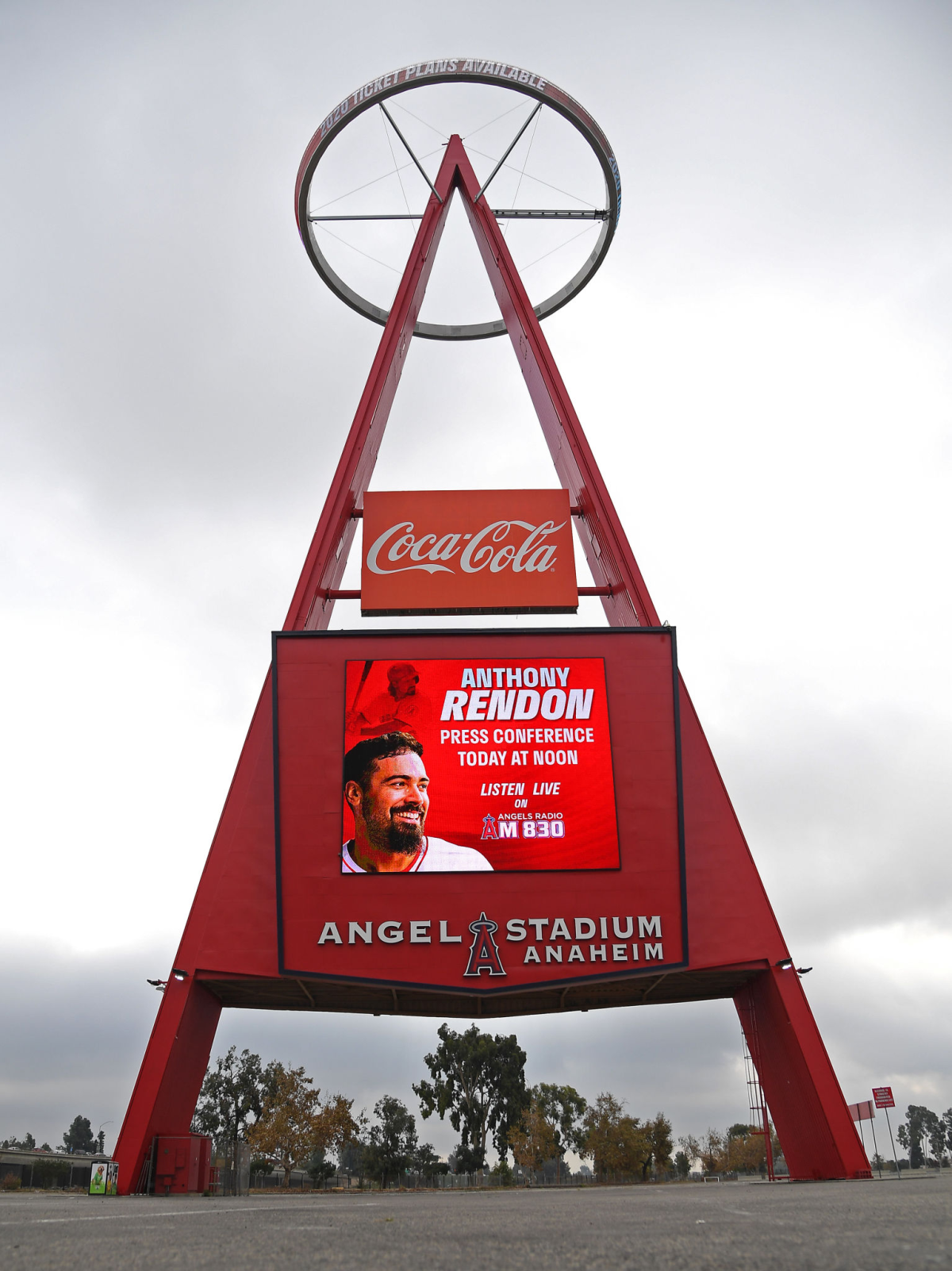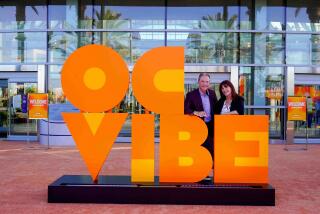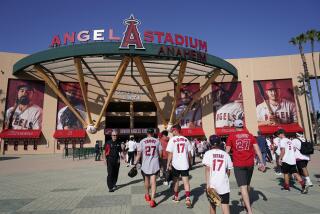Historically significant? No to Angel Stadium, yes to the Big A sign

- Share via
Is Angel Stadium historically significant? No, according to the city of Anaheim.
The Big A sign? Light that baby up, and keep the icon lit.
The architectural reviews were included in more than 2,000 pages of documents released Thursday by the city of Anaheim, all related to the start of an environmental assessment for development of land around Angel Stadium.
The City Council last December agreed to sell the 153-acre stadium site to Angels owner Arte Moreno’s newly formed development company for $325 million, with the price subject to discount. The city and the company are in negotiations over how much affordable housing and open space will be included in the project, how much local labor will be used, and how to pay for required infrastructure, all of which could impact the final sale price.

Moreno has not said whether he will renovate or replace Angel Stadium, but the documents released Thursday make clear the city does not consider the stadium itself to have lasting historical significance. The three major league ballparks older than Angel Stadium — Fenway Park in Boston, Wrigley Field in Chicago, and Dodger Stadium — have been extensively renovated with the intent of preserving the original atmosphere.
Angel Stadium has been substantially altered twice since it opened in 1966 — expanded when the Rams came from Los Angeles to Anaheim, then downsized after the Rams moved to St. Louis.
“Although Nolan Ryan set the single season strikeout record at the stadium,” the city’s environmental review read, “the playing field has been significantly changed and is no longer the one on which he accomplished this feat.”
The review also called the Big A an “icon,” based on state and local historical standards, describing the structure as a “significant example of Modern architecture with Googie elements as applied to an A‐frame sign.”
Although the sign qualifies as a “historic resource,” as defined by the California Environmental Quality Act, Moreno is not required to include it in his development of the site, which is expected to include homes, offices, hotels, restaurants, shops, parks and such neighborhood edifices as a grocery store and fire station. Nonetheless, spokeswoman Marie Garvey said: “The Big A will be part of our project.”
Said the city report: “When it was constructed, the 23‐story scoreboard/sign topped by a lighted halo was the tallest structure in the region and, because of the scoreboard/sign’s unique design and high visibility, the new stadium immediately garnered the nickname ‘the Big A.’ The relocation of the Big A next to the freeway in 1979 only enhanced its communication function and visibility. To the millions of people traveling the freeway, the Big A is easily one of the most recognizable identifying features in Anaheim.”
More to Read
Go beyond the scoreboard
Get the latest on L.A.'s teams in the daily Sports Report newsletter.
You may occasionally receive promotional content from the Los Angeles Times.







